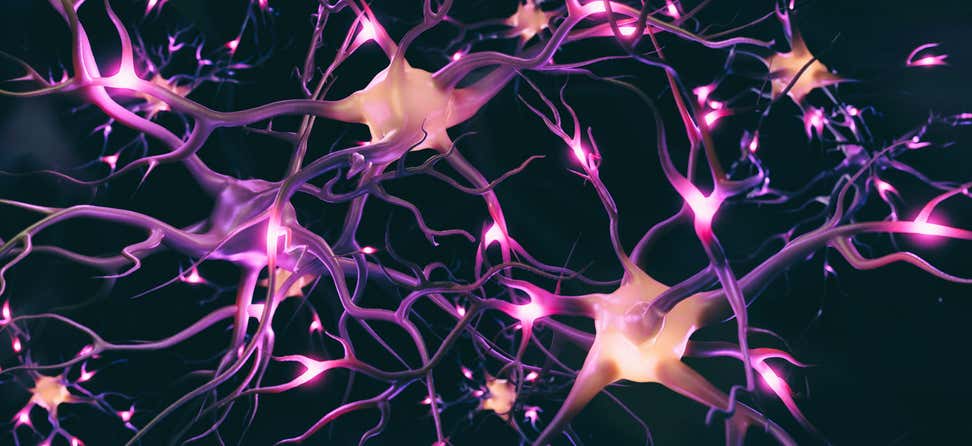Key Takeaways
It may be hard to know the difference between age-related changes and the first signs of dementia, but memory loss that disrupts daily life is not a typical part of aging.
The FDA approval of Aducanumab could make early detection and diagnosis of Alzheimer's even more critical.
Here's a list of top 10 warning signs for Alzheimer’s and other dementias to help identify problems early from The Alzheimer’s Association.
The terms “dementia” and “Alzheimer’s” are often used interchangeably. While they are related, there are distinct differences between the two. Dementia is the umbrella term for an individual’s changes in memory, thinking, or reasoning. There are many possible causes of dementia, including Alzheimer’s.
Understanding Alzheimer’s and Dementia
Alzheimer’s disease is the most common cause of dementia, accounting for 60 to 80 percent of all dementia cases. Alzheimer’s is not a normal part of aging—it is a progressive brain disease. More than 6 million Americans are living with Alzheimer’s. By 2050, this number is projected to rise to nearly 13 million.
FDA approves first therapy to delay decline from Alzheimer’s
On June 7, 2021, Aducanumab (Aduhelm™) was approved as a treatment for Alzheimer’s disease by the U.S. Food and Drug Administration (FDA). This is the first FDA-approved therapy to potentially delay decline from the disease, compared to current medications that only address symptoms. It is also the first therapy to demonstrate that removing amyloid from the brain may delay decline in people living with Alzheimer’s. Amyloid is the protein that clumps into sticky brain plaques that are a hallmark of Alzheimer’s disease. This means individuals may have more time to actively participate in daily life, have sustained independence, and hold on to memories longer.
Early diagnosis is key
The approval of this new therapy makes early detection and diagnosis even more critical to ensure individuals receive the most benefit at the earliest point possible. Early diagnosis has demonstrated better health outcomes for individuals and their caregivers. It may be hard to know the difference between age-related changes and the first signs of dementia, but memory loss that disrupts daily life is not a typical part of aging. Your memory often changes as you grow older. Some people recognize changes in themselves before anyone else notices. In other cases, friends and family are the first to observe changes in memory, behavior, or abilities. The Alzheimer’s Association has created a list of warning signs for Alzheimer’s and other dementias to help identify problems early. Individuals may experience one or more of these signs in different degrees.
10 warning signs for Alzheimer’s disease and other dementias
1. Memory loss that disrupts daily life
One of the most common signs of Alzheimer’s disease, especially in the early stage, is forgetting recently learned information. Others include forgetting important dates or events, asking for the same questions over and over, and increasingly needing to rely on memory aids (e.g., reminder notes or electronic devices) or family members for things they used to handle on their own.
What’s a typical age-related change?
Sometimes forgetting names or appointments, but remembering them later.
2. Challenges in planning or solving problems
Some people living with dementia may experience changes in their ability to develop and follow a plan or work with numbers. They may have trouble following a familiar recipe or keeping track of monthly bills. They may have difficulty concentrating and take much longer to do things than they did before.
What’s a typical age-related change?
Making occasional errors when balancing a checkbook.
3. Difficulty completing familiar tasks at home, at work, or leisure
People living with Alzheimer's often find it hard to complete daily tasks. Sometimes they may have trouble driving to a familiar location, organizing a grocery list or remembering the rules of a favorite game.
What’s a typical age-related change?
Occasionally needing help to use the settings on a microwave or to record a television show.
4. Confusion with time or place
People living with Alzheimer's can lose track of dates, seasons and the passage of time. They may have trouble understanding something if it is not happening immediately. Sometimes they may forget where they are or how they got there.
What’s a typical age-related change?
Getting confused about the day of the week but figuring it out later.
5. Trouble understanding visual images and spatial relationships
For some people, having vision problems is a sign of Alzheimer's. This may lead to difficulty with balance or trouble reading. They may also have problems judging distance and determining color or contrast, causing issues with driving.
What’s a typical age-related change?
Vision changes related to cataracts.
6. New problems with words in speaking or writing
People living with Alzheimer's may have trouble following or joining a conversation. They may stop in the middle of a conversation and have no idea how to continue or they may repeat themselves. They may struggle with vocabulary, have trouble naming a familiar object or use the wrong name (e.g., calling a "watch" a "hand-clock").
What’s a typical age-related change?
Sometimes having trouble finding the right word.
7. Misplacing things and losing the ability to retrace steps
A person living with Alzheimer's disease may put things in unusual places. They may lose things and be unable to go back over their steps to find them again. He or she may accuse others of stealing, especially as the disease progresses.
What’s a typical age-related change?
Misplacing things from time to time and retracing steps to find them.
8. Decreased or poor judgment
People living with Alzheimer’s may experience changes in judgment or decision-making. For example, they may use poor judgment when dealing with money or pay less attention to grooming or keeping themselves clean.
What’s a typical age-related change?
Making a bad decision once in a while.
9. Withdrawal from work or social activities
A person living with Alzheimer’s disease may experience changes in the ability to hold or follow a conversation. As a result, he or she may withdraw from hobbies, social activities or other engagements.
What’s a typical age-related change?
Sometimes feeling weary of work, family and social obligations.
10. Changes in mood and personality
Individuals living with Alzheimer’s may experience mood and personality changes. They can become confused, suspicious, depressed, fearful or anxious. They may be easily upset at home, with friends or when out of their comfort zone.
What’s a typical age-related change?
Developing very specific ways of doing things and becoming irritable when a routine is disrupted.
What’s Next?
These warning signs are intended to be a guide to help identify problems in memory, thinking, or behavior that may be related to Alzheimer’s or another dementia. Individuals may experience one, all or some of these signs in varying degrees, and in numerous or single occurrences. They do not have to experience them all for there to be concern. It’s important to discuss any changes in memory, thinking or behavior, in either yourself or someone else, with a doctor.









